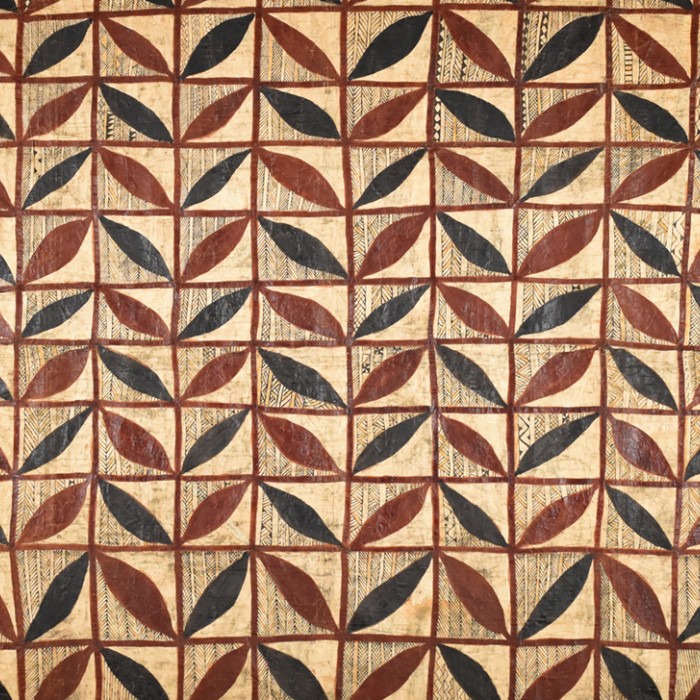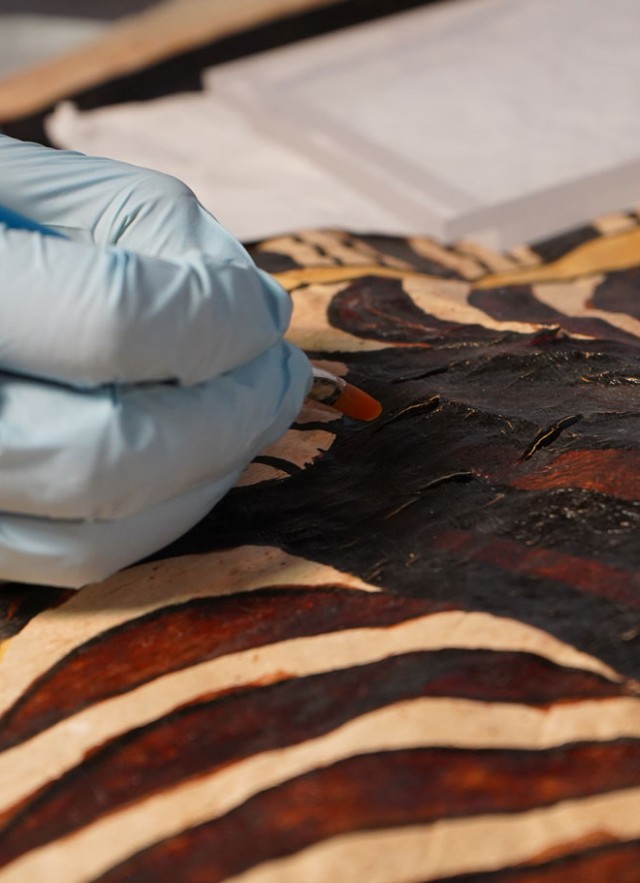
What Are Tapa and Woven Mats?

Faitau itulau ile gagana Samoa
Perhaps more significant to us in diasporic communities, tapa and woven mats presented at weddings were not newly made or acquired but were older pieces that have stayed in the family. Parting with them demonstrates their significance, the cultural value of sharing wealth, and that a sign of ‘wealth’ is being able to give away/distribute what you have.
—Katrina Talei Igglesden (Fijian)
To many Pacific Island cultures, the conservation and preservation of tapa and woven mats begins with folding the cloth and using it on special occasions, or gifting the cloth to create kinship ties. Most tapa are meant to be worn, gifted, regifted, repurposed, and eventually returned to the earth. This cycle of reuse and repurposing reflects the importance of these fabrics in creating community ties. Within museum collections, the focus of conservation efforts is to preserve the cloths as representations of cultural heritage. At the Natural History Museum of Los Angeles County, our goal is to maintain the condition of the tapa and finely woven mats in our collection in order to share them with their communities and to continue to learn from these unique pieces.
Taking care of a museum collection is a labor of love. Often this is a job for the collections manager, who is tasked with addressing how the materials should be stored and housed; recording how often they have been on display and for how long; and simply finding the time (and space) to check the objects for signs of insect or environmental damage. On top of this, a collections manager maintains the collections records and compiles any research—all with the goal of keeping objects available for researchers, community members, and exhibition departments.
As we evaluated and documented the collection of tapa and finely woven mats, our collections manager, curator, and conservators decided which items to conserve in house. Preservation and repair of cultural material can be a slow process. Our conservators take the utmost care when working on any material, but particularly material as fragile as the paper-like plant fibers used to create these fabrics. Take a peek at the videos below, which show timelapse versions of an 18-hour conservation process, as well as detailed explanations of the conservation techniques used by our conservator.
The Natural History Museums of Los Angeles County wish to thank the following community members for their support with this project: Audrey Alo, Cindi Alvitre, Juliann Anesi, Katrina Talei Igglesden, Fran Lujan, Kirisitina Sailiata, Tavae Samuelu, Kelani Silk, Lolofi Soakai, Asena Taione-Filihia, and Craig Torres. The Fabric of Community has been made possible in part by a major grant from the National Endowment for the Humanities (NEH): Democracy demands wisdom. Any views, findings, conclusions, or recommendations expressed in this exhibition do not necessarily represent those of the NEH.